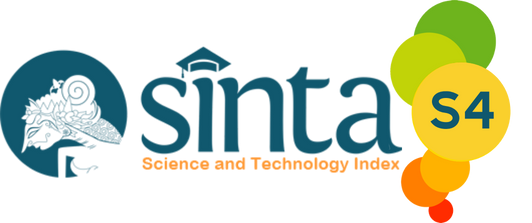Main Menu |
Editorial Team |
Submissions |
Focus and Scope |
Publication Ethics |
Peer Review Process |
Author Guidelines |
Author Fees |
Author Guidelines
Authors submitting manuscripts must adhere to the following requirements. Failure to comply with these guidelines may result in the manuscript being returned for revision.
- The submitted manuscript has not been previously published and is not under consideration by another journal (or an explanation has been provided in the comments to the editor).
- The manuscript file is in one of the following formats: OpenOffice, Microsoft Word, RTF, or WordPerfect.
- When available, URLs for references should be provided.
- The text is formatted with 1.15 spacing, using a 12-point Times New Roman font, without underlining (except for URLs). All illustrations, figures, and tables are placed appropriately within the text. (Complete formatting guidelines are available in the template.
- The text adheres to the stylistic and bibliographic requirements outlined in the Author Guidelines, which can be found on the About Us page.
- If the manuscript is submitted for the peer-reviewed section of the journal, the Ensuring Anonymous Reviewers guidelines have been followed.
The complete template for the journal in Indonesian can be downloaded here, while the manuscript template in English can be downloaded here.
Abstract
- The abstract must be written in both English and Indonesian.
- It should consist of 150–250 words in a single paragraph.
- The font used for the abstract is Times New Roman, 10 pt, with single spacing.
- The number of keywords should be 3–5 words.
Content
The article consists of the following sections: Introduction, Methods, Results and Discussion, Conclusion, Acknowledgments, and References.
1. Introduction
The introduction should provide a comprehensive explanation of the research variables, the background of the issue or problem, and the significance of the study. It should also include a rationale for the research, a gap analysis in comparison to existing studies, and a clear statement of the research objectives.
2. Methods
This section should describe the procedures and steps undertaken in data collection (data collection techniques) and the analysis methods used to obtain the results. Additionally, it may include details on the number of respondents involved in the study.
3. Results and Discussion
This section presents the research findings and discussion in an integrated manner. Data analysis procedures, such as statistical calculations and hypothesis testing, do not need to be included. Research results may be supplemented with tables and figures to enhance clarity and facilitate a better understanding of the findings.
4. Conclusion
The conclusion should be concise, clear, and presented in a single paragraph. It should summarize the key findings and discussions while addressing the research objectives. Additionally, recommendations for practical applications or future research may be included.
5. Acknowledgments (Optional)
This section can be used to express appreciation to individuals or institutions that contributed to the research or manuscript, such as funding support, permission grants, consultants, or teams involved in data collection.
6. References
Journal manuscripts follow the American Psychological Association (APA) style. Submitted manuscripts should consist of the article only, excluding supplementary materials such as raw data, research instruments, and other supporting documents.
The reference list should include only sources cited in the manuscript, with a minimum of 15 references. At least 80% of the references should be primary sources (preferably journal articles), and they should have been published within the last 10 years. Authors are encouraged to use reference management software such as Mendeley, Zotero, or EndNote to ensure proper citation formatting.
Example of reference
Example of reference from a textbook:
Halliday, D., Resnick, R., & Walker, J. (2013). Fundamentals of physics. John Wiley & Sons.
Example of reference from an edited textbook:
Sofian Effendi. (1982). Unsur-unsur penelitian ilmiah. Dalam Masri Singarimbun (Ed.). Metode Peneltian Survei. Jakarta: LP3ES
Example of reference from translated book:
Daniel, W.W. (1980). Statistika non-parametrik terapan. (Terjemahan Tri Kuntjoro). Jakarta: Gramedia
Example of reference from a thesis or dissertation:
Slamet Suyanto (2009). Keberhasilan sekolah dalam ujian nasional ditinjau dari organisasi belajar. Disertasi, tidak dipublikasikan. Universitas Negeri Jakarta.
Example of reference from a journal article:
Damayanti, P., & Ulva, S. M. (2017). Pengembangan Media Adobe Flash CS3 Pada Konsep Bunyi Dengan Mengaplikasikan Model Instructional Games. Jurnal Ilmu Pendidikan Dasar KEGURU, 1(1), 28–42.
Efwinda, S., & Sopandi, W. (2016). Peningkatan penguasaan konsep siswa melalui pembelajaran IPA terpadu berbasis masalah berbantuan mind map. Edusains, 8(1), 27–35.
Example of reference from research compilation or proceedings:
Syam, M., & Efwinda, S. (2019). Analisis Keterampilan Berpikir Tingkat Tinggi Dengan Menerapkan Model Problem Based Learning (PBL) Pada Mata Kuliah Fisika Dasar di FKIP Universitas Mulawarman. Prosiding Seminar Nasional Fisika PPs Universitas Negeri Makassar, 1.
Example of reference from internet source:
White, H. (2007). Problem-based learning in introductory science across disciplines. Diakses tanggal 27 Maret 2007 dari http://www.udel.edu/chem/white/final-rpt.html











